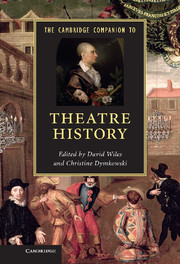7 - Finland
from Part III - Where?
Published online by Cambridge University Press: 05 February 2013
Summary
Books on European theatre and world theatre have generally ignored Finnish theatre and Finnish theatre history. There are no world-famous dramatists or theatre directors as in other northern European countries, such as Henrik Ibsen in Norway, August Strindberg and Ingmar Bergman in Sweden, or Jerzy Grotowski and Tadeusz Kantor in Poland. Nevertheless, the theatre infrastructure is as impressive and the theatre audience as engaged as in any country in Europe. Is Finnish theatre then only for the Finns? What is the relevance of Finnish theatre and Finnish theatre history for an international audience today? While Finnish theatre is isolated by its language and its location and idiosyncratic in many of its features, it is representative of many European systems that emerged in the nationalist movements of the nineteenth century. Many parallels can be drawn between the development of Finnish theatre and, for example, Hungarian, Norwegian, Czech, and Irish theatre. As in other emerging nations in Europe in the late nineteenth century, the Finnish theatre became a force for cultural nationalism, using the local language, folk poetry and mythology to stress the distinctiveness of the nation and ultimately its right to political independence. Like Czechs and Norwegians, for example, Finnish cultural nationalists built an impressive National Theatre in a prominent location in their capital city as a focal point for Romantic nationalist cultural expression in advance of becoming a nation-state.
Situated between Sweden and Russia and subject successively to the rule of both countries, Finland emerged as an independent country after the Russian Revolution in 1917. For much of the twentieth century, Finland occupied a strategic position between eastern and western Europe. During the Cold War, it acted as a border state, associated more with the West while maintaining political and military neutrality in the shadow of the Soviet Union. Even today Finland continues to occupy a frontier position as the most eastern state of the European Union. Although the Cold War has ended, the Russian government continues to flex its muscles and intimidate neighbours, such as Ukraine, Georgia and Estonia. Remembering the attempts by the Soviet Union to invade it during the Second World War, the Finnish population looks to the European Union for support but holds on to a semblance of neutrality by not joining NATO.
- Type
- Chapter
- Information
- The Cambridge Companion to Theatre History , pp. 104 - 115Publisher: Cambridge University PressPrint publication year: 2012

